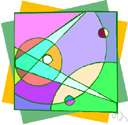tri·chro·mat·ic
(trī′krō-măt′ĭk) also tri·chrome (trī′krōm′) or tri·chro·mic (trī-krō′mĭk)adj.
1. Of, relating to, or having three colors, as in photography or printing.
2. Having perception of the three primary colors, as in normal human vision: trichromatic vision; a trichromatic individual.
tri·chro′ma·cy (trī-krō′mə-sē), tri·chro′ma·tism (-tĭz′əm) n.
American Heritage® Dictionary of the English Language, Fifth Edition. Copyright © 2016 by Houghton Mifflin Harcourt Publishing Company. Published by Houghton Mifflin Harcourt Publishing Company. All rights reserved.
 trichromacy - the normal ability to see colors
trichromacy - the normal ability to see colors